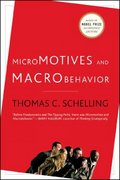Question
Suppose an individual, Mei, is deciding whether to invest in a project. Mei has utility function U(y) = y, where y is net income in
Suppose an individual, Mei, is deciding whether to invest in a project. Mei has utility function U(y) = y, where y is net income in dollars. The project costs $50 this year (t=0), $10 next year (t=1), and nothing in the following year (t=2). It will provide benefits of $40 next year (t=1) and $40 in the following year (t=2).
a. Suppose Mei has time-consistent preferences with discount factor = 0.90. Will Mei invest in the project?
b. Suppose Mei has time-inconsistent preferences with discount factor = 0.90 and present bias parameter = 0.80. Will Mei invest in the project?
c. Now suppose Mei has time-inconsistent preferences with discount factor = 0.90 and present bias parameter = 0.80. Mei has the option to start investing in the project next year (i.e., the project would cost $50 in year t=1 and $10 year t=2 and provide benefits of $40 in year t=2 and $40 in year t=3). Will Mei plan to start investing in the project next year, assuming she could commit to doing so?
d. Now suppose Mei could not commit to investing in the project next year and is aware of her time-inconsistent preferences with discount factor = 0.90 and present bias parameter = 0.80. Will Mei plan to start investing in the project next year? Explain how this answer compares with part c.
Step by Step Solution
There are 3 Steps involved in it
Step: 1

Get Instant Access to Expert-Tailored Solutions
See step-by-step solutions with expert insights and AI powered tools for academic success
Step: 2

Step: 3

Ace Your Homework with AI
Get the answers you need in no time with our AI-driven, step-by-step assistance
Get Started


